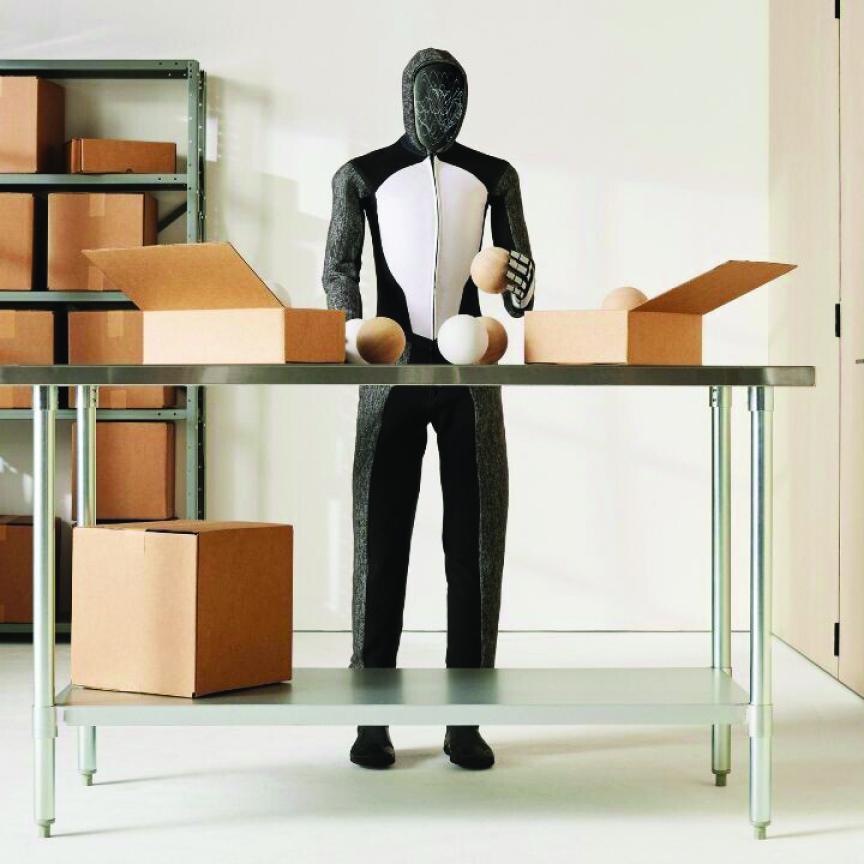A robot designed to kill salmon has been installed in a fish farm in Norway to automate its slaughterhouse.
Two ABB Flexpicker robots are positioned over a conveyor bringing in sedated fish, which are dispatched by inserting a needle in the head above the gills.
The system relies on a 3D stereovision camera from Norwegian vision firm Tordivel; Thor Vollset, CEO of the company, described the system at the UK Industrial Vision Association’s Machine Vision Conference in Milton Keynes on 16 May.
Around 4,800 fish can be slaughtered by the system per hour, according to Vollset, who said the fish are killed quickly and accurately. The robot has a 90 per cent hit rate and removes what is otherwise a tough and laborious job for a worker.
Vollset explained that the business case for the system is to replace manual labour, hard labour that no one wants to do. He added that the system will pay for itself in 6 to 12 months.
Salmon killer, qu'est-ce que c'est
Tordivel’s Scorpion 3D Stinger for Robot Vision camera captures a 3D stereovision image of the salmon using structured light. It can locate five to ten fish simultaneously, and guides the robot by first finding the fin and then calculating where to insert the needle. This has to be done in 3D, as the system needs to know the height profile of the fish to correct for perspective errors. Otherwise the robot will miss, Vollset explained, adding that the system is accurate to ±5mm to 10mm.
The machine operates in real time, working on a hard cycle time of less than 1 second per image; on average it kills two fish per second. Vollset said the speed of image processing could be increased by adding more computing power, reaching 250ms cycle times if necessary.
The Scorpion 3D Stinger camera has also been used in other aspects of fish farming, including counting fish and estimating the biomass of stock.
Robotics was a theme at the UKIVA conference, with both keynote talks addressing the subject: Professor Tony Pipe, deputy director of the Bristol Robotics Laboratory, discussed the soon-to-finish, three-year Venturer autonomous driving project, while Henry Harris-Burland, VP of marketing at Starship Technologies, spoke about the company’s delivery robots, which are being trialled in Monkston, a district of Milton Keynes.
Starship Technologies’ robots were driving around the trade fair floor during the show. They contain cameras to give a 360-degree view of their surroundings, as well as radar, ultrasonic sensors and a time-of-flight camera. They can carry small loads of 12kg, such as hot food, and navigate with a precision of one inch.
Harris-Burland said that the company’s strategy is to build inexpensive robots and manufacture many of them. At the moment Starship has 200 robots and is looking to reach 1,000 robots by the end of the year. Six States in the US have approved the delivery robot for use, and Starship is trialling in cities including Palo Alto, San Jose, and Redwood City, among others.

Starship Technologies currently has 200 delivery robots
The company isn’t trying to reach 100 per cent autonomy; Harris-Burland said that 99 per cent is good enough. At busy traffic intersections, for example, the robot will stop and wait for a human operator located remotely to tell it when it is safe to cross.
Harris-Burland noted that the vehicle’s battery, which lasts around three hours, is not the constraining factor to how far the robot can travel. Rather, the constraining factor is how long the robot can keep food warm, which is about 45 minutes.
The robot maps its surroundings as it travels around an area; the cameras have around a 12-metre viewing range.

